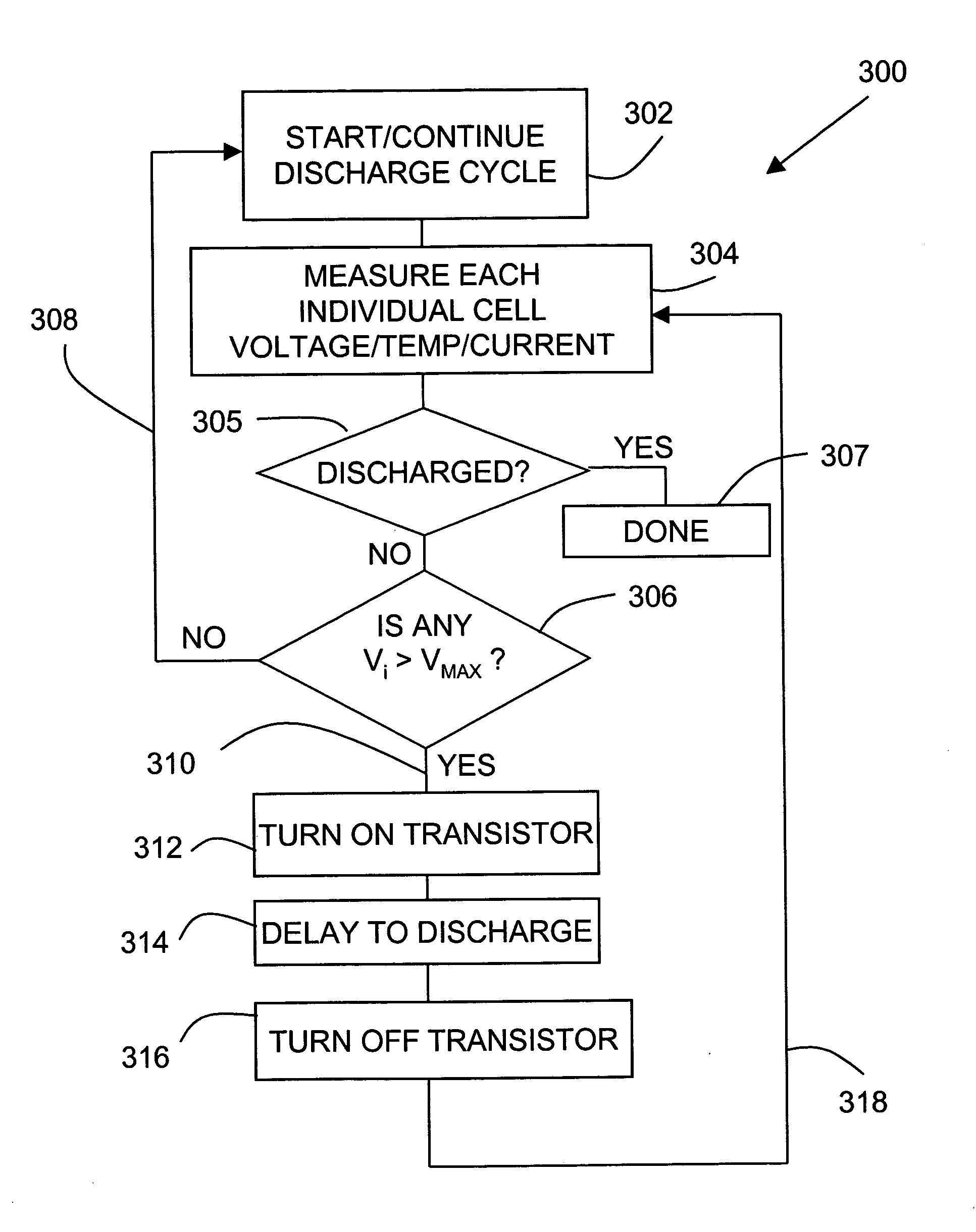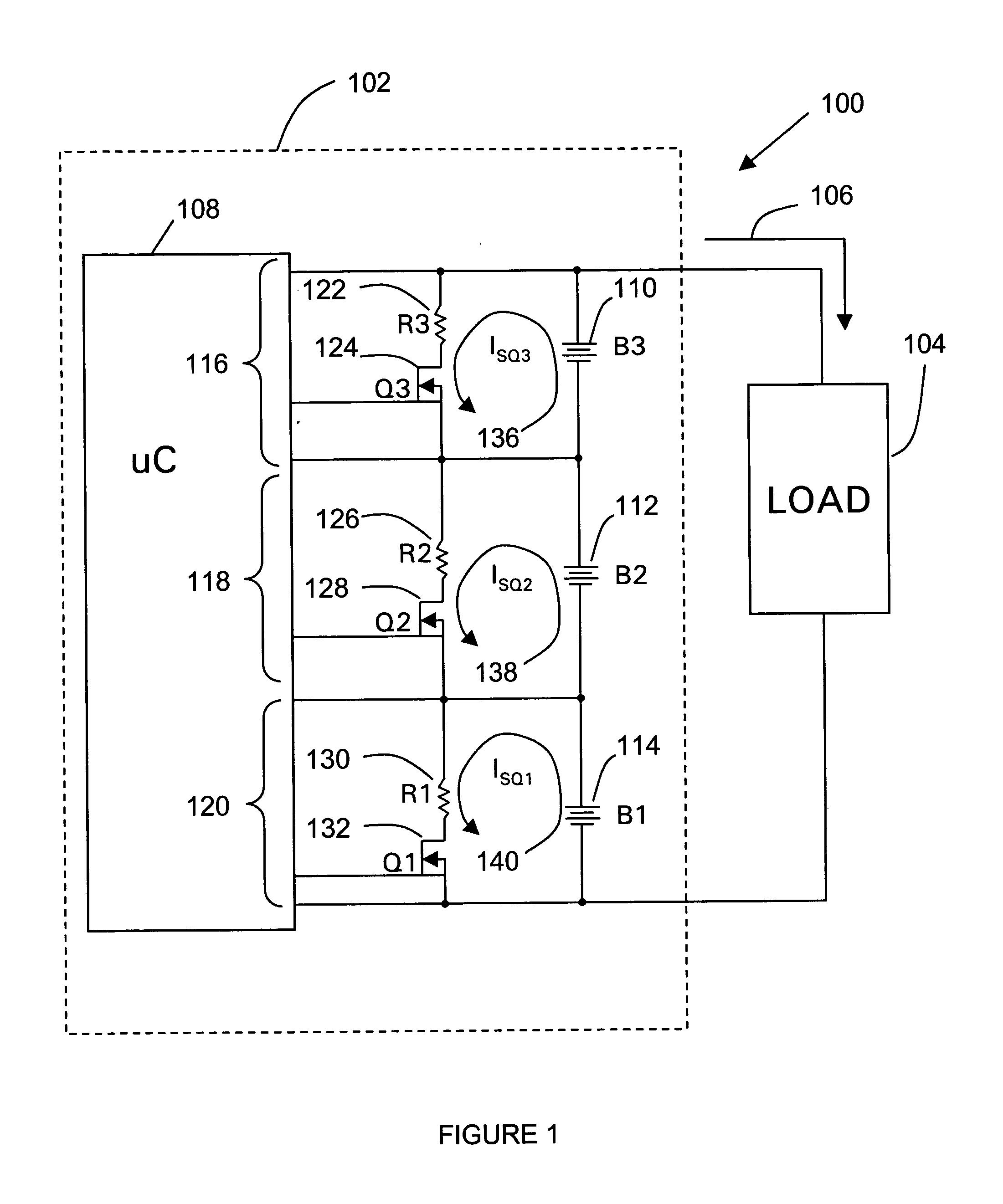Maximum Energy transfer through cell isolation and discharge
a cell isolation and maximum energy transfer technology, applied in the field of cell balancing in batteries, can solve the problems of battery pack inability to be fully charged, partial discharge of cells, and more slowly discharg
- Summary
- Abstract
- Description
- Claims
- Application Information
AI Technical Summary
Benefits of technology
Problems solved by technology
Method used
Image
Examples
Embodiment Construction
[0016] Referring to FIG. 1, a battery system of the present invention is shown and generally designated 100. System 100 includes a battery pack 102 in electrical communication with a load 104 that receives a current 106 from battery pack 102. In a preferred embodiment, the battery pack 102 includes a microcontroller 108 and a number of battery cells 110 (B3), 112 (B2), and 114(B1), in a series circuit configuration. The voltages of each cell 110, 112, and 114 are individually monitored by microcontroller 108, such as with a high-impedance input terminal. More specifically, the voltages of cells 110, 112 and 114 are measured by microcontroller 108 as voltage inputs 116, 118, and 120.
[0017] Across each cell 110, 112, and 114 is a transistor-resistor combination. Specifically, resistor 122 and transistor 124 are configured to provide an electrical circuit across cell 110 (B3). Similarly, resistor 126 and transistor 128 provide an electrical circuit across cell 112 (B2), and resistor 1...
PUM
 Login to View More
Login to View More Abstract
Description
Claims
Application Information
 Login to View More
Login to View More - R&D
- Intellectual Property
- Life Sciences
- Materials
- Tech Scout
- Unparalleled Data Quality
- Higher Quality Content
- 60% Fewer Hallucinations
Browse by: Latest US Patents, China's latest patents, Technical Efficacy Thesaurus, Application Domain, Technology Topic, Popular Technical Reports.
© 2025 PatSnap. All rights reserved.Legal|Privacy policy|Modern Slavery Act Transparency Statement|Sitemap|About US| Contact US: help@patsnap.com



